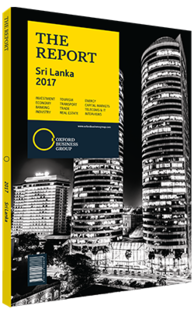Anura Wijayapala, Chairman, Ceylon Electricity Board (CEB): Interview

Interview: Anura Wijayapala
By what means will independent power producers fulfil the target of generating electricity using only indigenous renewable sources by 2030?
ANURA WIJAYAPALA: Sri Lanka is blessed to have nearly 50% of its electricity generated by renewable energy sources. In very dry years this decreases, and in wet years it increases. We plan to maintain the renewable proportion of electricity generation at more than 40%. The CEB strives to use as many indigenous renewable energy sources as possible for electricity generation, within the technical limitations of Sri Lanka’s power system. We are also keenly observing developments in the Mannar Basin, where we should be able to extract gas economically. We will then begin the planning stages for generating all of our electricity from indigenous sources. All small-scale renewable power plants will continue to be developed by the private sector, and several large-scale solar power plants and medium-sized wind power plants will be available for private developers over the course of next 10 years, starting with a 100-MW solar project in late 2016 or early 2017.
Moreover, we have recently enhanced the rooftop solar net metering scheme by offering two more options to customers, whereby CEB either pays for the extra electricity they provide after consumption or they operate the solar rooftop panels exclusively for selling power to CEB while enjoying subsidised electricity for their homes depending on their consumption level. In both cases, CEB will be paying LKR22 ($0.15) per KWh for the first seven years and LKR15 ($0.10) per KWh for the balance of the 20-year contract.
How is the government working with foreign creditors to reach 100% electrification?
WIJAYAPALA: The Asian Development Bank, Iran and Sweden have been at the forefront of supporting Sri Lanka in rural electrification projects. Presently, 98% of households receive electricity, though there is more to be done in certain districts, especially in the north. In extreme cases, those very isolated houses in rural areas will be provided with renewable solutions in the form of solar, wind or battery hybrid power.
How important is the adoption and integration of liquefied natural gas (LNG) into the electricity mix for future energy security?
WIJAYAPALA: We have to look at this from two perspectives, the first is that expanding our fuel mix enhances our fuel security. Second, we must look at new supply trends in LNG, especially with the entrance of US shale gas into the market. Experts have suggested that low price trends will continue for the next five to seven years, and that current global LNG resources are sufficient for the next 200 years. Therefore, it is important that Sri Lanka embraces LNG. As a first step, CEB is planning to set up a 300-MW gas turbine power plant near Colombo, increasing its gas power plant portfolio to over 1000 MW, and will build an LNG terminal to supply all the gas turbine power plants in Colombo with natural gas. Once an LNG terminal is established, other sectors such as transport and industry will also benefit.
In what ways can we ensure stable electricity prices in light of volatility in the global coal market?
WIJAYAPALA: The predictions are that coal prices will remain stable at least in the medium term. Long-term prices may be affected by possible coal taxes in view of global warming concerns. In Sri Lanka we are determined to widen our fuel mix by introducing LNG and large-scale solar power plants. The price predictions for large solar power plants seem very promising. There are also positive signs from the gas supplies of the Mannar Basin, in which case most of our oil-burning plants can be converted to gas, thereby reducing generation costs. We have not ruled out coal, especially clean coal, due to the price advantage. Nevertheless, we will continue to maintain a 40% share of electricity generation from renewables, while also maintaining stable prices.
You have reached the limit of premium articles you can view for free.
Choose from the options below to purchase print or digital editions of our Reports. You can also purchase a website subscription giving you unlimited access to all of our Reports online for 12 months.
If you have already purchased this Report or have a website subscription, please login to continue.

